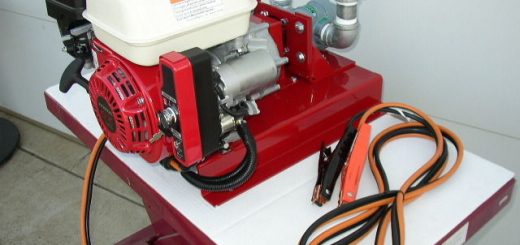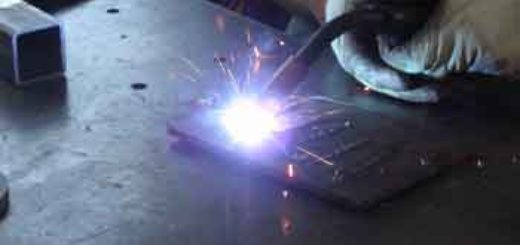NDT inspections, Non-destructive testing methods, applications, advantages and types
Non-destructive tests can be used in manufacturing, fabrication and in-service inspections to ensure product integrity & reliability, They are used to control manufacturing processes, lower production costs and to maintain a uniform quality level, They are used to ensure the quality of materials & joining processes during the fabrication & erection phases, They can ensure that the products have the integrity necessary to ensure their usefulness & the safety of the public.
Non-destructive testing (NDT)
It is the process of inspecting, testing or evaluating materials, components or assemblies for discontinuities or differences in characteristics without destroying the serviceability of the part or system, when the test is completed, the part can be used, It can locate defects & determine the features of the defects such as size, shape & orientation, It can inspect the component in a safe, reliable & cost-effective manner without causing damage to the equipment or shutting down plant operations.
Nondestructive Testing consists of a variety of non-invasive inspection techniques used to evaluate material properties, components or entire process units, The techniques can be utilized to detect, characterize, or measure the presence of damage mechanisms, The terms nondestructive examination (NDE), nondestructive inspection (NDI), and nondestructive evaluation (NDE) are used to describe this technology.
Nondestructive Testing can be performed during or after manufacture, or on equipment that is in service, In manufacturing, NDT inspections can be used to asses the current damage state of equipment, monitor damage mechanisms, and make informed decisions for remaining equipment life evaluations (e.g., RBI, FFS).
Non-destructive testing (NDT) is the main tool for quality control, safety & reliability, It is a group of analysis techniques, The IAEA promotes the use of non-destructive testing technology to maintain the stringent quality control standards for the safe operation of nuclear & other industrial installations, It can help its Member States train staff in applying the technology and offer necessary equipment.
NDT presents many benefits compared to destructive testing, The testing equipment is portable and it can be performed numerous times on a single component, The component itself can be thoroughly evaluated externally and internally for harmful flaws, Non-destructive testing can save both money & time in product evaluation, troubleshooting, and research, but the results are often qualitative and may be repeated & interpreted differently by various inspectors.
Non-destructive testing is used in mechanical engineering, petroleum engineering, forensic engineering, electrical engineering, civil engineering, systems engineering, aeronautical engineering, medicine, and art, Innovations in the field of nondestructive testing have had a profound impact on medical imaging, including on echocardiography, medical ultrasonography, and digital radiography.
Non-destructive testing methods
The methods of non-destructive testing are used in industry to evaluate the integrity & properties of the material, components or system without causing damage to the tested object, While there are hundreds of methods available, the most common are Industrial radiography, Ultrasonic radiography, Liquid penetrant inspection, Magnetic particle inspection, and Eddy current testing.
Industrial radiography uses short X-rays, gamma rays, and neutrons to penetrate materials, Ultrasonic radiography uses mechanical vibrations similar to sound waves, Liquid penetrant inspection can locate surface-breaking defects in non-porous materials, Magnetic particle inspection can detect surface & slightly subsurface discontinuities in ferromagnetic materials, Eddy current testing uses electromagnetic induction to detect flaws in conductive materials.
Test method names refer to the type of penetrating medium or the equipment used to perform that test, Current NDT methods such as Acoustic Emission Testing (AE), Leak Testing (LT), Guided Wave Testing (GW), Ground Penetrating Radar (GPR) & Laser Testing Methods (LM), Magnetic Flux Leakage (MFL), Neutron Radiographic Testing (NR), Microwave Testing, Thermal/Infrared Testing (IR), Vibration Analysis (VA).
The most used NDT methods are Electromagnetic Testing (ET), Liquid Penetrant Testing (PT), Magnetic Particle Testing (MT), Radiographic Testing (RT), Ultrasonic Testing (UT), and Visual Testing (VT), NDT methods are classified into two categories: conventional & advanced, Each method has its characteristic advantages & limitations.
Conventional NDT Techniques have matured & become well-documented in codes, standards, and best practices, The setup & procedure of a conventional technique are simpler than advanced methods, Conventional inspection methods such as ultrasonic thickness testing can offer a useful, fast, low-cost method for assessing materials, in comparison with advanced NDT, Conventional methods are less repeatable, less recordable, and have a lower Probability of Detection (PoD).
Advanced NDT Techniques are less understood as they progress as emerging technologies, uncertain advantages or limitations, lack of technician qualification criteria or little to no industry codification, the setup, procedure, and data interpretation of advanced methods is more complicated and can require specialized understanding & experience from a properly trained technician, The main benefit of these high-end technologies is their cost, Advanced NDT instruments may require significant levels of training to best exploit their benefits.
X-rays properties, uses and method of obtaining X-rays by using Coolidge tube
The advantages and disadvantages of ultrasonic waves in detecting industrial defects
Ultrasonic welding process uses, advantages and disadvantages













